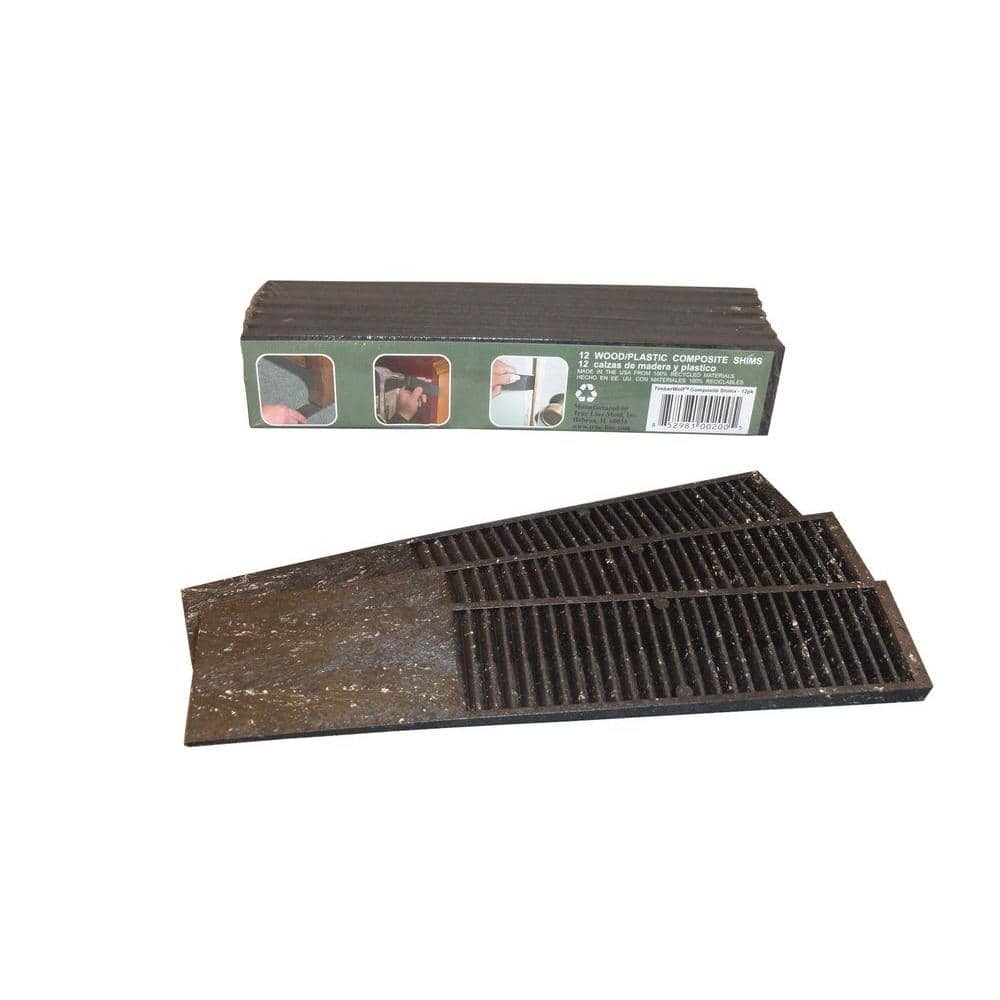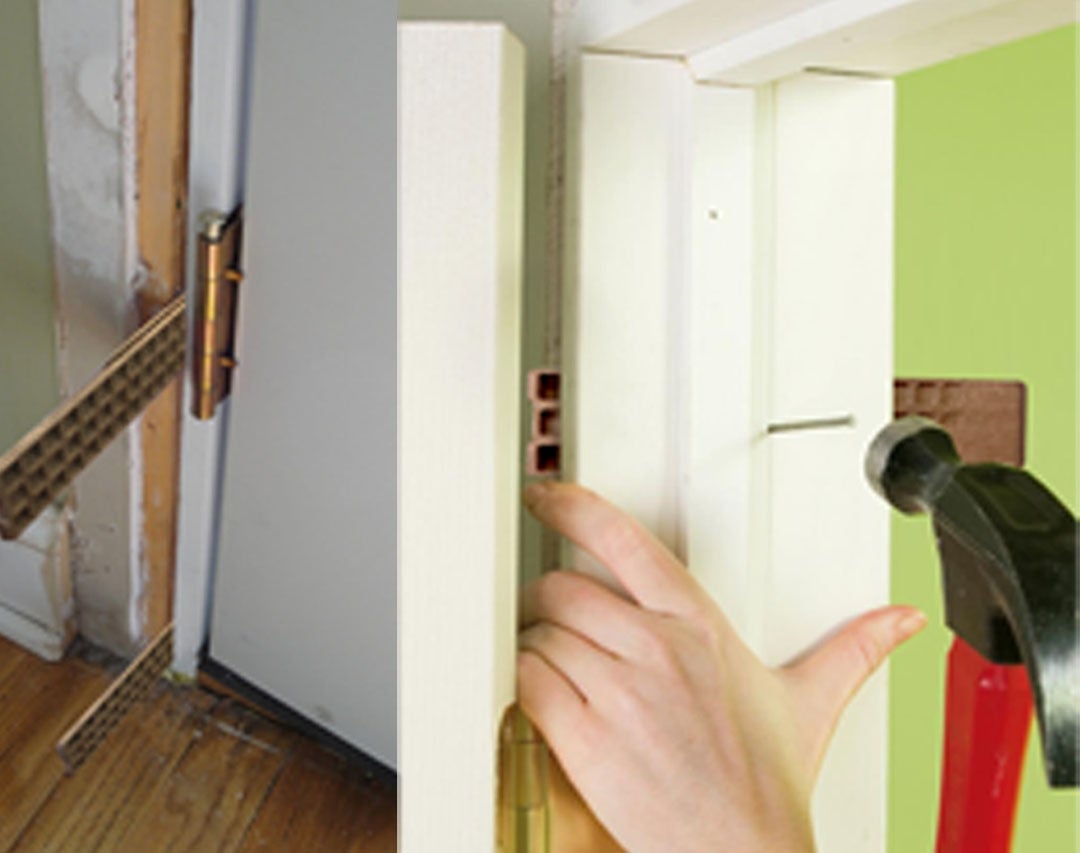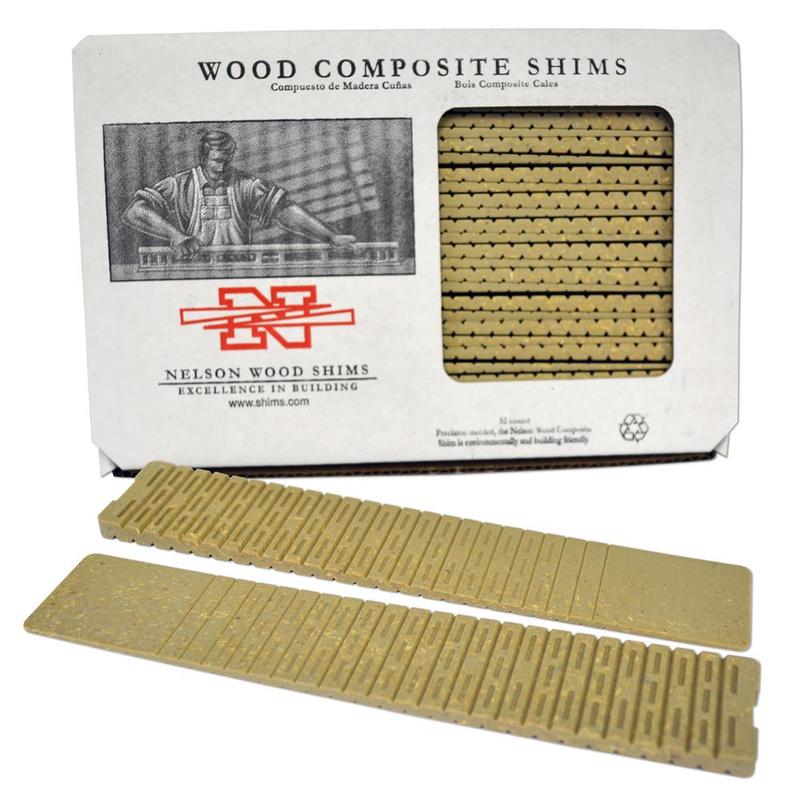Are you in the middle of a home renovation or a DIY project? If so, you’ve probably encountered the debate: composite vs wood shims.
Both types of shims are small, yet they play a crucial role in ensuring everything from your flooring to your doors is perfectly aligned. But which one is right for you? Making the wrong choice could mean the difference between a job well done and a frustrating do-over.
Imagine finding out that your carefully installed door is slightly off-kilter, or your newly laid tiles aren’t quite level. By understanding the strengths and weaknesses of each type of shim, you can make an informed decision that saves you time, money, and headaches. So, let’s dive into the world of shims and discover which material will best suit your needs. Your project’s success depends on it!
What Are Shims?
Ever wondered what those small, wedge-shaped objects are doing in the toolbox or under your furniture? They are shims, and despite their simplicity, they play a crucial role in various construction and DIY projects. Whether you’re leveling a floor or stabilizing a piece of furniture, shims can be your secret weapon. Understanding the basic definition and common uses of shims can open your eyes to their importance and versatility.
Basic Definition
Shims are thin, often wedge-shaped pieces of material used to fill gaps or adjust the alignment between surfaces. They can be made from various materials, including wood, plastic, and metal.
Think of shims as the unsung heroes that help maintain balance and precision in your projects. They come in different sizes and thicknesses, allowing for fine adjustments in tight spaces.
Imagine setting up a new bookshelf only to find it leaning awkwardly due to uneven flooring. A shim can easily correct that imbalance. They offer practical solutions without needing to haul out heavy equipment or make permanent changes.
Common Uses
Shims have a wide range of applications. They are frequently used in carpentry to align doors and windows. This ensures smooth operation and prevents drafts.
In plumbing, shims help secure pipes and fixtures, reducing the risk of leaks and water damage. A simple shim can save you from major repair costs down the road.
Furniture leveling is another common use. If you’ve ever sat at a table that wobbles, you know how frustrating it can be. A shim can quickly stabilize the piece, providing instant relief.
Beyond these practical uses, shims can also be employed in creative ways. You might use them in art installations or even to create a temporary incline for a project. The possibilities are endless, limited only by your imagination.
Have you ever considered how a small object like a shim could make such a big difference in your daily life? Next time you face a wobbly chair or an uneven floor, remember the humble shim and its potential to solve your problem efficiently.

Credit: www.homedepot.com
Wood Shims Explained
When you’re leveling floors, installing windows, or aligning door frames, wood shims are often the unsung heroes behind the scenes. These small, wedge-shaped pieces are crucial for achieving balance and perfection in construction projects. Before diving into the world of composite options, let’s break down what makes wood shims tick.
Types Of Wood Used
Wood shims come from a variety of trees, each offering unique qualities. Pine is a popular choice due to its softness, which makes it easy to cut and adjust. Cedar shims add a touch of natural resistance to moisture, ideal for environments prone to dampness. Oak, though less common for shims, provides robust strength for heavy-duty projects.
Choosing the right wood type can impact your project. Consider the environment and the required strength before you decide. A friend once chose cedar for a bathroom renovation, only to rave about its durability and ease of use in moist conditions.
Benefits Of Wood Shims
Wood shims offer a natural feel and are easily customizable. You can cut them down or layer them to fit snugly into any gap. They’re biodegradable, making them an eco-friendly choice. Plus, they’re inexpensive, ensuring you don’t break the bank while fixing those tricky uneven spots.
Imagine working with materials that feel like an extension of your hands—wood shims provide that tactile satisfaction. The ability to mold them to your exact needs is an invaluable asset in precision tasks.
Drawbacks Of Wood Shims
Despite their advantages, wood shims have limitations. They can absorb moisture, leading to potential swelling or rot over time. This can affect their longevity and reliability in damp conditions. Additionally, they might not be as strong as composite shims in holding heavy loads.
Do you recall a time when a project didn’t turn out as planned? A friend once shared how his wood shims expanded after a rainy season, causing misalignment. It’s a reminder that understanding material limitations is as crucial as knowing their benefits.
As you weigh the pros and cons, consider what matters most for your specific needs. Is it cost, environmental impact, or durability? Your choice could be the difference between a seamless project and unexpected challenges.
Composite Shims Explained
Composite shims are a modern solution for leveling and aligning. They offer durability and precision in various applications. Unlike traditional wood shims, composite shims are engineered for specific uses. Their design ensures consistent performance and reliability. Understanding their makeup and benefits can guide your choice.
Materials Used In Composite Shims
Composite shims typically use plastics and resins. These materials provide strength and flexibility. They resist moisture, unlike wood. This makes them ideal for wet environments. Some composites include recycled materials. This supports eco-friendly construction practices.
Advantages Of Composite Shims
Composite shims are resistant to rot and decay. They maintain their shape over time. This ensures long-lasting stability. Their design allows for precise leveling. They can support heavy loads without breaking. Composite shims are lightweight, making them easy to handle.
Limitations Of Composite Shims
Composite shims may cost more than wood. Their upfront expense could be higher. Not all composites are suitable for extreme temperatures. Some may warp under intense heat. Always check the specifications before use. They may not be as readily available as wood shims.
Comparison Of Composite And Wood Shims
Composite shims offer durability and resistance to moisture, making them ideal for outdoor use. Wood shims, often used in carpentry, provide a traditional feel and are easy to trim. Both materials serve specific needs, with composite excelling in longevity and wood offering classic craftsmanship.
When you’re working on a construction or renovation project, the small details matter. One such detail is choosing between composite and wood shims. These tiny wedges can make a big difference in how your work holds up over time. Let’s dive into a comparison of these two types of shims to help you make an informed decision.Durability
Composite shims are often praised for their durability. Made from plastic or synthetic materials, they’re resistant to moisture and won’t rot. This makes them a great choice for outdoor projects or damp environments. Wood shims, on the other hand, are traditional but can be less durable. They can absorb moisture, leading to swelling or decay over time. However, for indoor projects where exposure to the elements isn’t an issue, wood shims can last quite a while. Which type have you found to hold up better in your experiences?Cost
When it comes to cost, wood shims are typically more budget-friendly. They’re often the go-to choice for those looking to save a few bucks on a project. Composite shims, while slightly more expensive, might be worth the investment for their longevity and resilience. The initial higher cost can be offset by the reduced need for replacement or repair. Would you spend a bit more upfront for peace of mind?Versatility
Wood shims offer great versatility. You can easily cut or shape them to fit specific needs. Whether leveling a door or securing a window frame, they adapt with ease. Composite shims, while not as easy to modify, boast uniformity and precision. They’re ideal for situations where exact measurements are crucial. Which do you prefer for those tricky fitting jobs?Environmental Impact
Wood shims are made from natural materials, which means they’re biodegradable. This makes them an eco-friendly option if sustainability is a priority for you. Composite shims, however, are less environmentally friendly due to their plastic content. They don’t decompose and can contribute to long-term waste. Does eco-friendliness influence your choice? Making the right choice between composite and wood shims depends on your specific project needs. Consider these factors carefully to ensure your project stands the test of time.Choosing The Right Shim For Your Project
Choosing between composite and wood shims depends on project needs. Composite shims resist moisture, making them ideal for outdoor use. Wood shims offer flexibility and are easy to cut, perfect for indoor adjustments. Both materials have unique benefits, ensuring the right fit for different tasks.
Choosing the right shim for your project can make all the difference in ensuring stability and precision. Whether you’re installing doors, windows, or leveling furniture, the choice between composite and wood shims is crucial. Each type has unique benefits and potential drawbacks, so understanding these can help you make the most informed decision.Factors To Consider
When selecting a shim, think about the environment where it will be used. Wood shims are traditional and often preferred for their natural feel and ease of use. However, they may warp or rot in damp conditions. Composite shims, made from plastic or other synthetic materials, resist moisture and are often more durable in harsh environments. They also provide a consistent thickness, which can be a significant advantage. Another factor is the load-bearing capacity. Wood shims might compress under heavy loads, whereas composite shims typically maintain their shape and support. The ease of cutting or trimming is another consideration. Wood shims can be easily shaped with a knife, while composite shims might require a saw. Think about the tools you have on hand and your comfort level with them.Project-specific Recommendations
For indoor projects like installing door frames or cabinetry, wood shims are often more than adequate. Their ease of use and availability make them a popular choice for these tasks. In contrast, for outdoor projects or areas prone to moisture, composite shims are often recommended. They can withstand the elements without degrading, making them ideal for decks or exterior windows. If you’re working on a heavy-duty project, such as supporting structural beams, the non-compressive nature of composite shims is beneficial. They provide a reliable, sturdy foundation. Consider a recent project where you struggled with aligning a window due to an uneven surface. Using a composite shim might have saved time and prevented future warping. Ultimately, the right shim depends on your specific needs and environment. Are you prepared to deal with potential moisture issues, or do you need the flexibility of easy trimming? Your answers will guide you to the perfect choice.
Credit: deslinc.com
Installation Tips For Shims
Installing shims, whether composite or wood, might seem straightforward, but a few strategic tips can make all the difference in achieving a seamless fit. Whether you’re leveling a door frame or stabilizing furniture, knowing the right tools and steps can save you time and frustration. Imagine tackling a project without the right guidance—you might end up with a wobbly result instead of a sturdy finish. Here’s how you can ensure your shims serve their purpose effectively.
Tools Needed
- Hammer:Essential for tapping shims into place.
- Utility Knife:Useful for cutting shims to the desired size.
- Level:Ensures your surfaces are even and balanced.
- Measuring Tape:Guarantees precise shim placement.
- Pencil:For marking where adjustments are needed.
Having the right tools at hand is crucial for any shim installation. Imagine trying to cut a shim without a utility knife—it would be a struggle. With these tools, you can approach your project with confidence and efficiency.
Step-by-step Guide
- Identify the Problem Area:Determine where leveling or stabilization is needed. Is it a door frame or a piece of furniture?
- Measure the Gap:Use your measuring tape to find the exact space that needs filling.
- Cut the Shim:Use the utility knife to trim your shim to the right size. Precision matters here.
- Place the Shim:Insert the shim carefully into the gap. Make sure it fits snugly.
- Tap into Place:Use your hammer to gently tap the shim until it’s securely positioned.
- Check Level:Use the level to ensure the surface is even. Adjust the shim if necessary.
- Mark and Trim Excess:Mark any protruding shim with a pencil and trim with the knife.
Have you ever tried fitting a shim only to realize it’s too big? Cutting it down can make all the difference. Remember, precision leads to stability.
Think about the satisfaction of achieving a perfectly level surface—it’s worth the effort. With these steps, you can tackle any shim installation challenge with ease. Are you ready to make your next project a success?
Maintenance And Care For Shims
When it comes to ensuring the longevity of your shims—whether composite or wood—proper maintenance and care are key. Shims might be small, but they play a crucial role in leveling and aligning structures. Neglecting their upkeep can lead to bigger problems down the line. So, how do you keep these little helpers in top shape?
Routine Checks
Regular inspections are essential. Set a schedule, perhaps every six months, to examine your shims. Look for signs of wear and tear, such as cracking or splitting, especially in wood shims.
Moisture is a common enemy, particularly for wood shims. If you notice any dampness, address it immediately to prevent rotting. Composite shims are more resistant, but even they can suffer from structural stress over time.
Think of routine checks as your opportunity to catch small issues before they become major headaches. Have you ever ignored a minor car issue only to face a bigger repair later? The same principle applies here.
Replacement Guidelines
Knowing when to replace shims is crucial. If a shim is visibly damaged or no longer effective, it’s time for a swap. With wood shims, watch out for splinters or significant changes in shape.
Composite shims might not show obvious signs of wear but can still lose their effectiveness. If your structure seems uneven or isn’t holding as it should, evaluate your shims’ condition.
Replacement doesn’t have to be a hassle. Keep a few spares on hand for quick fixes. Think of it like having extra light bulbs at home—it’s always good to be prepared.
How do you ensure the longevity of your tools? Share your maintenance tips in the comments below. Your insights might just inspire someone to keep their shims in better shape!

Credit: www.bbindustriesllc.com
Frequently Asked Questions
What Are Composite Shims Made Of?
Composite shims are made from plastic and fiberglass materials. They are durable and resistant to moisture.
How Do Wood Shims Differ From Composite?
Wood shims come from natural timber. They are biodegradable but less resistant to moisture compared to composite.
Are Composite Shims Eco-friendly?
Composite shims are less eco-friendly. They contain synthetic materials that are not biodegradable.
Which Type Of Shim Is More Durable?
Composite shims are more durable. They resist moisture and rot better than wood shims.
Can I Use Wood Shims Outdoors?
Yes, but with caution. Wood shims can degrade faster outdoors due to moisture exposure.
Conclusion
Choosing between composite and wood shims depends on your needs. Composite shims resist moisture and last longer. Wood shims offer a natural look and are easy to shape. Consider the project’s environment and budget. Both have advantages and serve different purposes.
Think about durability and appearance. Every project is unique. Decide based on your priorities and goals. Composite might suit wet areas better. Wood could be perfect for a rustic touch. Always weigh pros and cons. Make a choice that meets your specific requirements.
Your decision shapes the project’s success.




